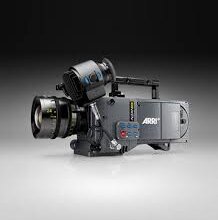How to Select the Perfect Spot for Your Computer Table at Home?
Creating a productive and comfortable workspace at home or in the office doesn’t stop at purchasing the right computer table — where you place it plays an equally crucial role. The location of your computer table can significantly impact your productivity, comfort, mental focus, and even your physical health. Whether you’re working remotely, studying, gaming, or simply using the space for personal tasks, choosing the ideal spot for your computer table requires thoughtful planning.
This article guides you through the essential considerations to help you find the perfect location for your computer table, making your space efficient, ergonomic, and visually appealing.
1. Understand Your Space and Its Purpose
Before positioning your computer table, assess the layout and dimensions of your room. Start by asking yourself:
- Is this a dedicated home office, a bedroom corner, or a multi-purpose area?
- Will the space be used solely for work, or will it double up for other activities (e.g., reading, entertainment, etc.)?
- Do you prefer a quiet, secluded workspace or a central location within the home for easy access?
Knowing how you intend to use the space helps in narrowing down potential spots that align with your needs and daily routine.
2. Prioritize Natural Light — But Use It Smartly
Natural light can enhance your mood, reduce eye strain, and boost productivity. A spot near a window is often ideal, but there are a few important factors to keep in mind:
- Avoid Direct Glare: Place the computer table perpendicular to the window rather than directly in front of or behind it. This prevents harsh light from hitting your screen, causing glare or reflections that can strain your eyes.
- Curtains or Blinds: If placing the desk near a window, ensure there are window treatments to control the amount of sunlight entering during peak hours.
Natural light is a game-changer, but it needs to be managed well to avoid discomfort during long work hours.
3. Pay Attention to Power Source Accessibility
Your computer setup is likely to include more than just a monitor. You’ll probably need outlets for charging laptops, phones, routers, printers, lamps, and other devices. Choose a spot near enough to power sources to avoid overreliance on extension cords, which can clutter your workspace or create tripping hazards.
If outlets are limited in the desired area, consider installing a power strip with surge protection or using cable organizers to maintain a tidy look.
4. Consider Ergonomics and Comfort
A well-positioned computer table should allow you to maintain a healthy posture and reduce physical strain. Look at the following ergonomic factors:
- Chair Placement: Make sure there’s ample room behind and beneath the desk to comfortably accommodate your office chair and allow leg movement.
- Monitor Height: The screen should be at eye level to prevent neck strain. Adjusting the table location to a spot where you can position your monitor at the right height is key.
- Lighting: Besides natural light, ensure there’s sufficient artificial lighting (like desk lamps or ceiling lights) to prevent eye fatigue during evening hours.
If possible, do a test run — sit in the proposed spot with your actual chair and laptop or monitor to check comfort levels before committing.
5. Minimize Distractions
The environment around your computer table should support concentration and productivity. Avoid placing your desk in high-traffic or noisy areas such as:
- Near the kitchen or living room if others will be present during your working hours.
- Next to doors or hallways that might frequently open and close.
- Beside TVs or entertainment units that can become distracting.
Instead, look for corners or areas that are naturally quiet and less exposed to household hustle.
6. Account for Ventilation and Temperature
Proper airflow and temperature control are essential for comfort and equipment longevity. Avoid placing your computer table in areas that are too close to heat sources such as radiators or direct sunlight. Similarly, don’t block air vents or windows with the desk, as it can restrict airflow.
If the room tends to get warm, position the desk in a way that airflow from ceiling fans or air conditioners isn’t blocked. Proper ventilation not only keeps you comfortable but also protects electronics from overheating.
7. Allow Room for Growth and Accessories
As your work or study needs evolve, so might your requirements for space. When choosing a spot, think long-term:
- Will you need additional accessories like a second monitor, printer, or extra storage?
- Is there room to add a bookshelf, filing cabinet, or extra chair?
Choosing a slightly larger space now can save you from having to relocate everything later. A little foresight can go a long way in building a scalable and adaptable setup.
8. Create a Visually Inspiring Environment
While functionality is key, aesthetics should not be ignored. Your work area should inspire creativity and focus. Choose a location that allows for some personal touches like:
- A wall for pinboards, calendars, or art.
- Nearby shelves for books and office decor.
- Plants, photos, or other calming visuals.
These elements can uplift your mood and reduce stress, making your work time more pleasant and effective.
9. Think About Noise and Acoustics
Background noise can be a major disruptor, especially for tasks that require deep focus or video conferencing. Choose a quieter part of the house or use rugs, curtains, or acoustic panels to minimize echo and noise levels. If external sounds are unavoidable, consider using noise-cancelling headphones as part of your setup.
10. Don’t Forget Safety and Cleanliness
Lastly, choose a location that promotes easy maintenance and safety:
- Keep cables organized and out of walkways.
- Ensure the table is not blocking emergency exits or walkways.
- Clean corners are preferable to dusty or humid spots that could damage electronics.
Regular maintenance is easier when your desk isn’t crammed into an inaccessible or messy area.
Final Thoughts
The ideal spot for your computer table is one that balances comfort, functionality, and inspiration. It should be a place where you can focus without distraction, stay organized, and feel physically at ease even after long hours of work. From natural light to power access and room layout, every detail matters.
Whether you’re outfitting a full-fledged home office or simply trying to create a productive corner in your bedroom, a well-chosen location can elevate your work-from-home experience dramatically. And once you’ve found that perfect spot, the right furniture will make all the difference.
For thoughtfully designed, stylish, and ergonomic computer tables to complement any space, explore the exclusive range at Wooden Street.




